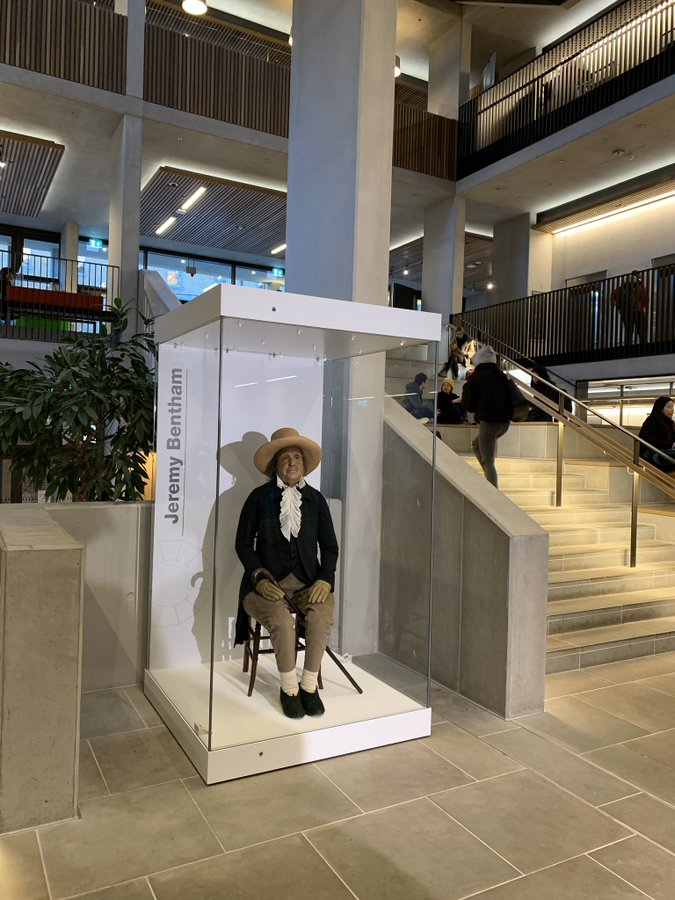
Biographical details are almost always going to be irrelevant to your examination answers. So don’t mention any of this, but I thought that the following details were quite amusing.
- Bentham was fond of animals and kept a cat that he called Reverend Dr. John Langborn.
- He used jokey vocabulary with his circle of friends, which included the phrase ‘antejentacular circumgyration’ to refer to his morning walk.
- Although he was a sickly child, he was healthy and active throughout his adult life, and in old age. In 1826, a young American acquaintance wrote in his diary that Bentham, aged 78, had just ‘trotted’ all the way from Fleet Street to Queen’s Square Place on the south side of St James’s Park (about 3 km).
- Interested in a technique used by the Maoris of New Zealand for dehydrating and preserving the heads of their dead, Bentham thought that the same practice could usefully be adopted in Europe, so that the heads of the great benefactors of mankind could still be seen by future generations and be an inspiration to them. He therefore instructed in his will that his physical remains be preserved and displayed. And so his skeleton, filled out with straw and topped with a wax head (because the attempt to preserve the original was not very successful), still sits in his original clothes in a glass box in University College, London.
- It has been suggested that his eccentricity and genius may be partly attributable to Asperger’s Syndrome.
- Though it was never actually built during his lifetime, Bentham is famous for having recommended the building of a scientifically designed maximum security prison called a ‘Panopticon’. Circular in shape, the prison was meant to feature a central tower surrounded by individual cells like spokes in a wheel. The guards in the central tower would be able to see into any of the cells at any given time, but due to special blinds the inmates would not be able to see the guards. So they did not know if they were being watched at any specific moment. Bentham the social reformer genuinely believed that social order and control of the population would be improved if the prisoners internalized the sense that they were being observed by unseen eyes. He thought that they would continue to feel that they were being watched after they were released, which would make them less likely to re-offend. Bentham also believed that the idea behind the Panopticon could be utilized in factories, hospitals and schools.
